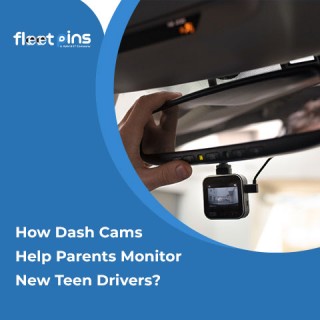
- On 2025-03-13
Why Drivers Resist Dash Cams and How to Overcome It ?
Dash cams have become an essential tool for fleet management. They are also helpful for safety compliance and insurance claims. However, many drivers are resistant to their installation, often perceiving them as a threat rather than a benefit. Understanding these concerns and addressing them effectively is key to ensuring a smooth adoption process. At Fleet Pins, we’ll explore why drivers resist dash cams and strategies for overcoming this resistance.
Why Drivers Resist Dash Cams?
Privacy Concerns
Many drivers feel that dash cams are an invasion of their privacy. They worry about being constantly monitored, especially if the dash cam records both inside and outside the vehicle. Some fear that their employers may misuse the footage against them.
Trust Issues with Management
Some drivers have had negative experiences with management in the past. They may view dash cams as a tool for micromanagement and disciplinary action rather than for safety and security.
Fear of Job Security
Some drivers believe that dash cams will be used to penalize them for minor mistakes, leading to disciplinary actions or even job loss. This fear is especially strong in industries where performance evaluations are directly linked to driver behavior.
Increased Stress and Anxiety
Knowing they are being recorded can make some drivers feel constantly pressured, leading to increased stress and anxiety. They may feel they have less freedom to make decisions on the road.
Misconceptions About Purpose
Many drivers assume that dash cams only benefit the company and not the drivers themselves. They may not be aware of how dash cams can protect them from false accident claims or disputes.
Technical Challenges and Maintenance
Some drivers worry that dash cams may malfunction or require them to handle maintenance, adding extra responsibilities to their jobs. Concerns about footage storage, device reliability, and potential system failures can also contribute to resistance.
How to Overcome Dash Cam Resistance?
Open Communication and Transparency
The first step in overcoming resistance is clear communication. Employers should explain why dash cams are installed, how they work, and the benefits for both the company and the drivers. Addressing concerns upfront builds trust and reduces misconceptions.
Emphasize the Benefits for Drivers
Drivers need to see how dash cams can work in their favor. Some key benefits include:
-
Protection from False Claims: If a driver is involved in an accident, dash cam footage can prove they were not at fault.
-
Improved Safety: Dash cams can encourage safer driving habits, reducing the risk of accidents and injuries.
-
Recognition and Rewards: Footage of good driving behavior can be used for recognition programs, leading to bonuses or other incentives.
For more insights into how dash cams improve safety, check out Why Driver Safety Should Be Every Fleet Manager's Top Priority.
Ensure Fair and Ethical Use
To ease concerns about misuse, companies should establish clear policies on how dash cam footage will be used. Clearly state that the footage will not be used for unwarranted surveillance or unfair disciplinary actions. Consider using only forward-facing cameras unless interior recording is necessary for safety reasons. Additionally, ensure that access is restricted to authorized personnel and that footage is used strictly for the intended purpose.
Introduce a Trial Period
A trial period allows drivers to experience the benefits of dash cams firsthand without feeling forced into compliance. After a set period, gather feedback and address any concerns before making it a permanent policy.
Offer Incentives and Positive Reinforcement
Rather than positioning dash cams as a tool for punishment, reward good driving habits. Some ways to encourage positive adoption include:
-
Performance-Based Bonuses: Reward drivers who consistently demonstrate safe driving behaviors.
-
Recognition Programs: Publicly acknowledge drivers who excel in safety and compliance.
-
Insurance Discounts: If applicable, show how dash cams can lower driver insurance premiums.
Learn more about how dash cams can enhance driver performance with What Is Driver Score And How Does It Work?
Train Your Drivers
Training drivers on how dash cams work and why they are helpful can make a big difference. Simple training sessions can explain the technology and show real-life examples of how dash cams have protected drivers. It’s also important to listen to drivers and let them share their thoughts.
They feel valued and heard when they are involved in the decision-making process. Conduct surveys or meetings where they can voice their concerns and suggestions. This helps build a sense of collaboration rather than enforcement.
Use AI and Smart Features for Driver Assistance
Modern dash cams come with AI-powered features that provide real-time driver assistance, such as:
-
Collision Warnings: Alerts drivers of potential hazards.
-
Fatigue Detection: Notifies drivers when signs of drowsiness are detected.
-
Coaching Features: Offers real-time feedback to improve driving habits without punitive measures.
Conclusion
Some drivers may not like the idea of dash cams, which is understandable. However, this can be managed by talking openly, being clear about why they are used, and focusing on the benefits for drivers. Companies should address concerns early and create a positive environment.
Dash cams are not for spying they are there to protect drivers and make the roads safer for everyone. In the end, they help both drivers and the company. Ready to see how dash cams can transform your fleet? Book a Demo today and experience the benefits firsthand!




